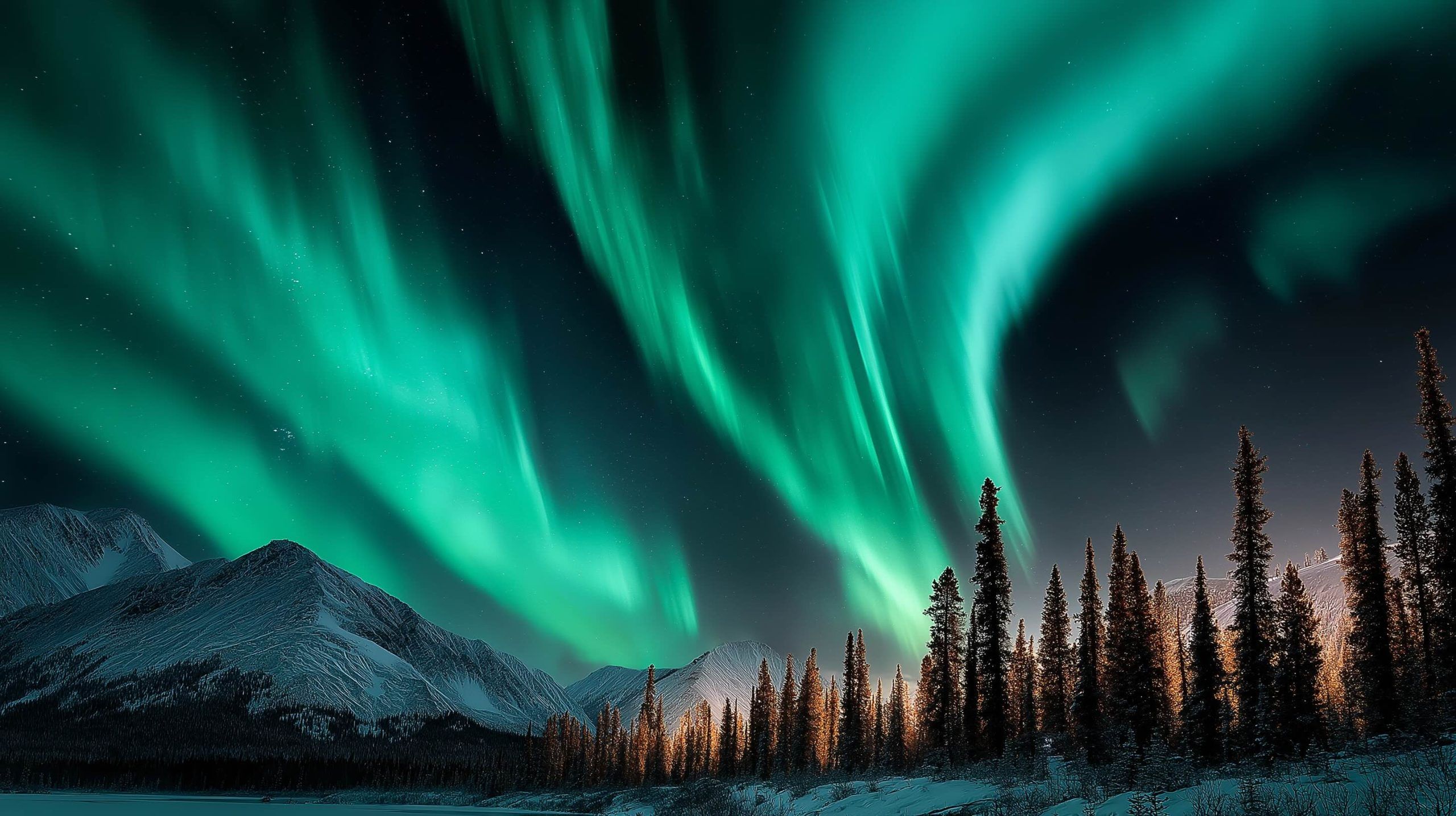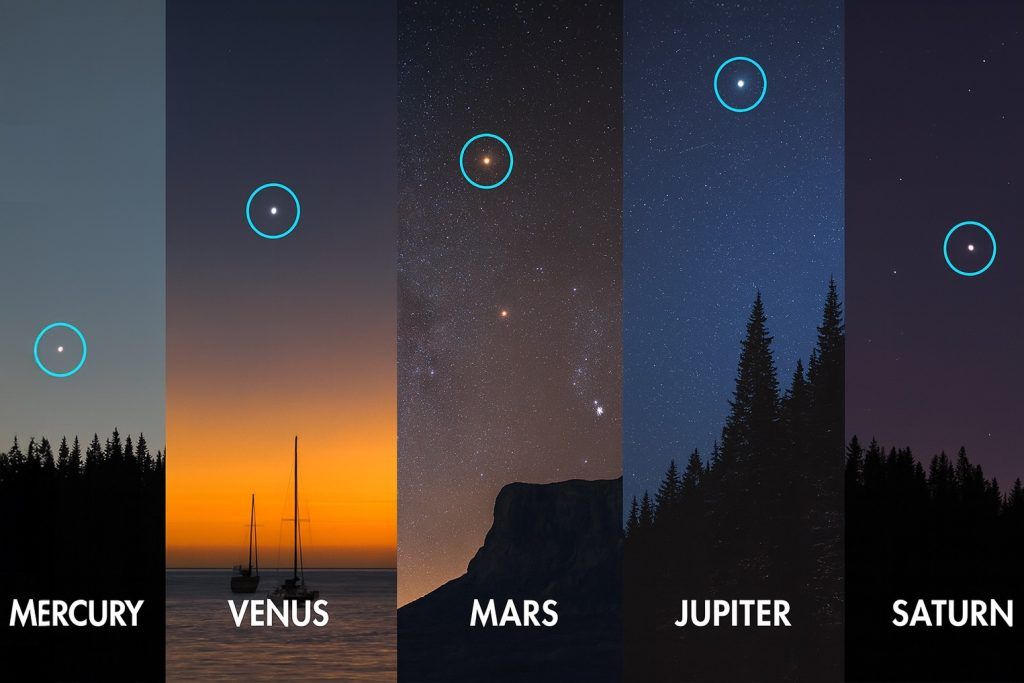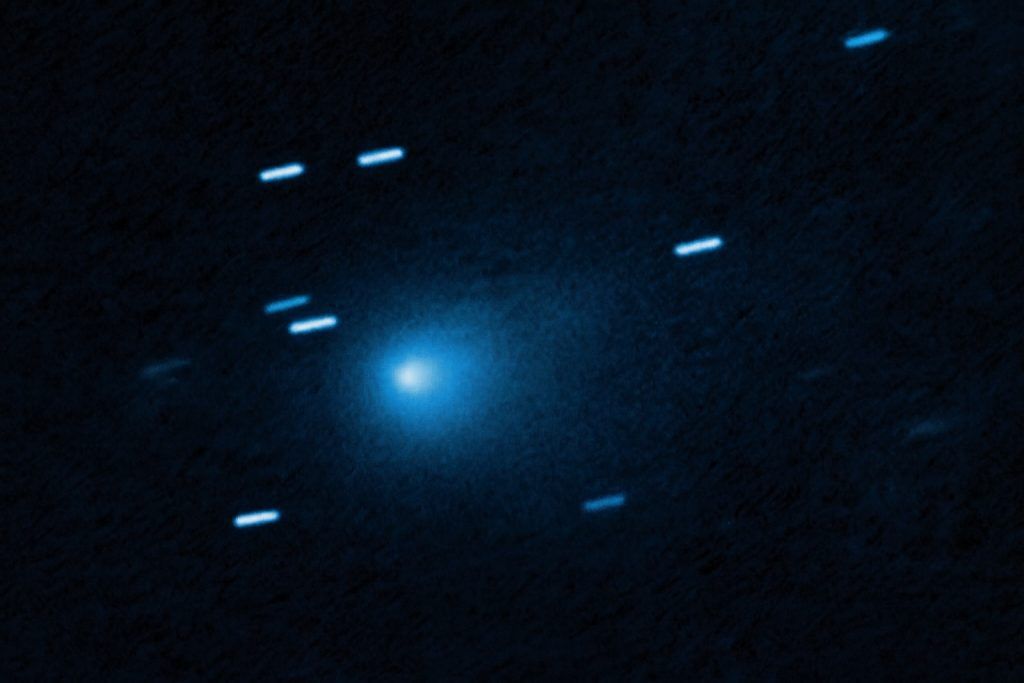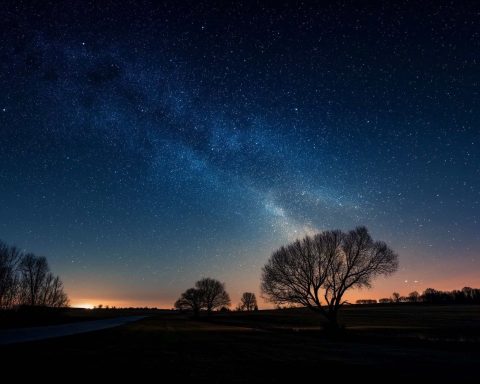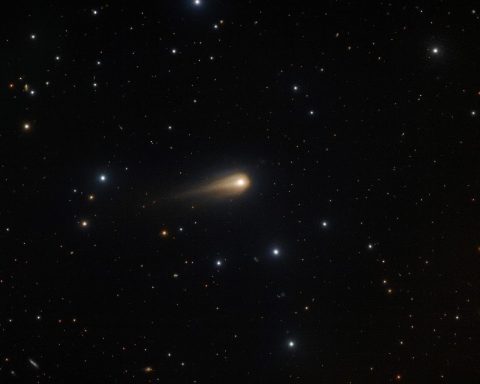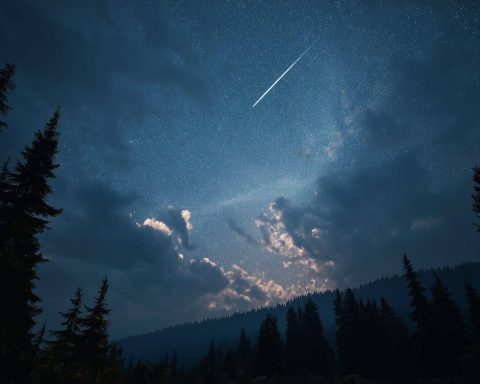- A G1 (Minor) geomagnetic storm is forecast for Aug 19, 2025 with Kp expected to reach 5, potentially making the aurora visible in at least 15 U.S. states.
- NOAA SWPC predicts auroras could be seen from Alaska across the Pacific Northwest to the Upper Midwest and New England, possibly including Iowa and northern Illinois.
- The peak viewing window is expected overnight Aug 19, roughly 11 p.m. to 5 a.m. EDT (0300–0900 UTC).
- The event is driven by a large coronal hole emitting a high-speed solar wind toward Earth, with a possible glancing-blow CME arriving around Aug 19–20.
- The Moon is a waxing crescent and sets early, reducing moonlight and aiding aurora visibility.
- The Sun is nearing the 11-year solar maximum in 2025, with rising solar activity and more frequent auroras anticipated through 2025–26.
- Earlier on Aug 7–8, 2025 a similar minor storm lit auroras in about 18 states, and on May 31, 2025 forecasts suggested auroras in roughly 20 states.
- In April 2023 a stronger G4 geomagnetic storm pushed auroras into over 30 states, with sightings as far south as North Carolina, Missouri, and Arkansas.
- NOAA’s forecast lists peak visibility by state, including Alaska virtually the entire state, Washington, Idaho, Montana; North Dakota, South Dakota, Minnesota; Wisconsin, Michigan; Maine, Vermont, New Hampshire; New York (upstate); Wyoming; northern Iowa; and possibly northern Illinois.
- To maximize your chances, seek dark rural sites, face north with a clear horizon, monitor from about 10 p.m. to 4 a.m., and use aurora alerts or apps such as Aurorasaurus or My Aurora Forecast.
Get ready for a rare celestial light show: A minor geomagnetic storm is forecast to make the aurora borealis (Northern Lights) visible much farther south than usual on the night of August 19, 2025. Skywatchers from Alaska and the Pacific Northwest to the Upper Midwest and New England – potentially even parts of Iowa and northern Illinois – have a chance to glimpse the aurora low on the horizon or dancing overhead in green and purple hues [1] [2]. This event is notable because auroras rarely reach such southerly U.S. latitudes except during stronger solar storms. Below, we break down the science behind the aurora, why tonight’s display is special, where it will be visible, the current space weather conditions, and how to maximize your chances of seeing this natural spectacle.
What Causes the Aurora Borealis? (Geomagnetic Storms 101)
The aurora borealis is a brilliant atmospheric light display caused by disturbances in Earth’s magnetic field – usually from bursts of solar activity. When the Sun erupts with charged particles (from a solar flare or a coronal mass ejection, CME), those particles speed toward Earth. Our planet’s magnetic field deflects most of them, but some stream down along the magnetic poles [3]. As the energetic particles collide with atoms of oxygen and nitrogen high in the atmosphere, the atoms become “excited” and then release photons of light – resulting in glowing curtains of color in the sky [4]. The aurora’s colors depend on the type of gas and the altitude of the collision: oxygen typically emits green light (and rarer red at very high altitudes), while nitrogen produces blue or purple hues [5].
This solar-driven light show is linked to geomagnetic storms – disturbances in Earth’s magnetosphere caused by enhanced solar wind. The Kp index is a scale (0 to 9) that measures the intensity of geomagnetic activity. Higher Kp values mean a stronger storm that pushes the auroral oval farther south. For instance, a minor G1-class geomagnetic storm (Kp 5) might make auroras visible in northern-tier U.S. states, whereas a severe G4/G5 storm (Kp 8–9) can produce auroras as far south as the Deep South (in 2023, a G4 storm made the aurora visible as far as Arkansas) [6] [7]. In essence: the stronger the geomagnetic storm, the lower latitudes the Northern Lights can reach [8].
Why the August 19, 2025 Auroral Event Is Notable
Tonight’s aurora forecast is grabbing headlines because it’s unusually far-reaching for a minor storm. The U.S. Space Weather Prediction Center (SWPC/NOAA) predicts a Kp 5 geomagnetic storm on Aug. 19 (a G1 Minor storm) [9]. While G1 storms are relatively common and typically only light up the sky in high latitudes, this one is expected to extend the auroras into portions of at least 15 U.S. states [10] [11]. That means millions of Americans outside the usual aurora zone could have a chance to see the Northern Lights if conditions are right. It’s essentially a “rare summer light show” for the northern U.S., as one science news outlet put it [12].
What’s behind this aurora outbreak? Forecasters point to a large coronal hole – an open, cooler region on the Sun’s surface – that has been spewing a high-speed stream of solar wind toward Earth [13] [14]. That solar wind stream is buffeting Earth’s magnetic field and priming it for auroras. In addition, a recent small solar eruption could deliver a “glancing blow” CME to Earth between Tuesday and Wednesday, potentially prolonging or slightly enhancing the light show [15] [16]. The U.K. Met Office noted “an increasing possibility… of a Coronal Mass Ejection glance Tuesday into Wednesday”, on top of the ongoing fast solar wind effects [17]. In short, a one-two punch of steady solar wind plus a minor CME is creating ideal conditions for auroras tonight.
This event is also significant in the context of the current solar cycle. The Sun is approaching the peak of its 11-year cycle (solar maximum) in 2025, and solar activity has been ramping up. We’ve seen more sunspots, flares, and geomagnetic disturbances in recent months. NOAA notes that solar activity is on the rise into 2025–26, which means more frequent aurora displays can be expected in the next year or two [18]. In fact, earlier this month (Aug 7–8, 2025) a similar minor storm brought auroras to around 18 states, and back on May 31, 2025, a stronger storm was forecast to make Northern Lights visible in ~20 states [19] [20]. And just last year, an even more intense G4 geomagnetic storm in April 2023 pushed auroras into over 30 states, with sightings as far south as North Carolina, Missouri, and Arkansas [21]. Bottom line: aurora sightings outside the far north, once rare, are becoming a bit more common as we head into a period of high solar activity.
Where Will the Northern Lights Be Visible Tonight?
According to NOAA’s forecast, auroras might be visible (weather permitting) in the following U.S. states on the night of Aug. 19:
- Alaska – (virtually the entire state has a strong chance)
- Washington, Idaho, Montana – (Pacific NW and Northern Rockies)
- North Dakota, South Dakota, Minnesota – (Upper Plains/Upper Midwest)
- Wisconsin, Michigan – (Upper Midwest/Great Lakes)
- Maine, Vermont, New Hampshire – (New England)
- New York – (primarily upstate regions)
- Wyoming – (northern parts)
- Iowa – (especially northern Iowa; aurora likely low on the horizon)
These states lie along or above the projected auroral visibility line for a Kp 5 storm [22] [23]. Notably, states as far south as Iowa (around 42°N latitude) are included in the forecast, which is quite far south for the aurora. Some sources even suggest a slim chance that extreme northern Illinois (around the Wisconsin border) could catch a faint glow on the horizon [24]. Generally, the farther north you are within one of these states, the better your odds of seeing the lights.
Keep in mind the aurora’s exact reach can be unpredictable. The NOAA map is an estimate – if the geomagnetic storm ends up slightly stronger or the atmospheric conditions are ideal, the lights might creep a bit farther south than expected. Conversely, if the storm is a bit weaker, only the northern parts of the listed states will see anything. As always with auroras, local conditions (like cloud cover and light pollution) will make a big difference (more on that below).
Timing and Current Geomagnetic Storm Conditions (Kp Index & Solar Activity)
When to look: The geomagnetic storm is expected to peak during the overnight hours of Aug. 19, roughly from late evening into early Wednesday morning. NOAA’s Space Weather Prediction Center forecasts that auroral activity will be highest between ~11 p.m. and 5 a.m. EDT (0300–0900 UTC on Aug 19) [25]. That’s about 10 p.m.–4 a.m. local time for those in U.S. Central time zone, and 9 p.m.–3 a.m. for Mountain, etc. In many of the target states, sky darkness begins by ~9-10 p.m., so anytime after 10 PM local you should start checking the northern sky. The best displays often occur near magnetic midnight (which can be around 11 p.m.–1 a.m. local time), but auroras can flare up sporadically throughout the night [26] [27]. It’s wise to keep an eye out periodically until dawn or until the storm subsides.
Storm intensity: NOAA has issued a G1 (Minor) geomagnetic storm watch for August 19, based on the incoming solar wind stream [28] [29]. The Kp index is forecast to reach Kp 5 at peak tonight [30]. (For context, Kp 5 is the threshold for a G1 storm. Each whole number increase in Kp represents a much stronger storm – e.g. Kp 6 is G2-moderate, Kp 7 G3-strong, etc., up to G5 at Kp 9). While Kp 5 is on the low end of the storm scale, it is significant enough to push auroras into the northern U.S. under clear, dark skies. Both NOAA and the U.K. Met Office are also monitoring a small CME (solar eruption) that could brush past Earth. There’s a “chance of G1-level storming continuing into Tuesday and Wednesday due to a possible glancing blow from a CME,” according to the Met Office [31]. In practical terms, this means auroras could persist or recur into the night of Aug. 20 as well, if that faint CME impact arrives.
Solar activity update: The Sun has been active but not explosive in recent days. Several sunspot regions are currently facing Earth, and minor C-class solar flares have been popping off frequently (C flares are common, small flares) [32] [33]. Forecasters gave about a 50% chance for an M-class (moderate) solar flare and a 10% chance for an X-class (major) flare this week [34], but so far no big Earth-directed flares have occurred. The main driver of this aurora event is the giant coronal hole now aimed at Earth, which has been pumping out fast solar wind for the past couple days [35] [36]. Solar wind speeds over 500 km/s have been recorded hitting Earth’s vicinity [37] – enough to disturb our magnetic field. As that solar wind stream continues to arrive, Earth’s magnetosphere is getting buffeted and geomagnetic conditions have reached “active” levels (Kp 4) and should ramp up to minor storm (Kp 5) by tonight [38] [39].
The Bz component of the interplanetary magnetic field – essentially the orientation of the solar magnetic field relative to Earth – has at times pointed southward, which is favorable for aurora production [40]. (A southward Bz helps the solar wind energy couple into Earth’s magnetosphere more effectively.) If Bz stays southward during the peak hours, auroras are more likely; if it fluctuates northward, the aurora may weaken intermittently. Space weather experts will be watching these details in real time overnight.
The moon fortunately will not be a major factor tonight – it’s a waxing crescent and sets early in the evening, so moonlight won’t wash out the sky during the prime aurora viewing window [41]. This gives an extra advantage for contrast, meaning any auroral glow will stand out more against a dark sky.
How, When & Where to View the Northern Lights (Tips for Skywatchers)
Catching the aurora this far south requires a bit of planning and luck. Keep these tips in mind to improve your odds of seeing the Northern Lights:
- Go Far From City Lights (Dark Skies): Light pollution is the aurora’s worst enemy. Head to a dark location away from urban lights – even a 20-30 minute drive outside a city can make a huge difference [42]. Give your eyes time to adapt to the darkness (about 15-20 minutes) and avoid looking at bright screens or flashlights (use red-light flashlights if needed). The darker your surroundings, the more likely you’ll catch faint auroral glows [43] [44].
- Face North with Clear Horizon: Auroras will appear to the north of your location (for those in mid-latitudes). Find an observing spot with an unobstructed view of the northern horizon – no tall buildings, trees, or hills blocking your sightline [45]. If you’re near the southern edge of the aurora zone (e.g. Iowa or northern IL), any aurora will likely be low on the horizon, possibly just a faint greenish or whitish glow. A clear view is crucial. Remember, the aurora doesn’t have to be overhead – under strong conditions people have spotted it up to 600+ miles away, just above the horizon [46]. So a wide open northern sky is key.
- Timing Is Everything: The general window for aurora activity tonight is roughly 10 p.m. to 4 a.m. local time, with a probable peak around midnight to 2 a.m. [47] [48]. Start looking once it’s fully dark. Don’t be discouraged if you don’t see anything at 10 or 11 p.m. – geomagnetic activity can ebb and flow. Auroras often come in brief bursts – they might brighten for a few minutes, then fade, then return. It pays to be patient and keep checking periodically. Give yourself at least an hour of watching, if you can, breaking it up into intervals. The aurora can be a waiting game, but the payoff is worth it!
- Check the Weather Forecast: No matter how strong a solar storm is, you won’t see the aurora if clouds cover your sky. Check your local weather – ideally you want clear, dark skies. High thin clouds can dim the aurora and thick clouds will block it entirely. If it’s cloudy in your area, consider if you can drive to a clearer spot (but only if safe to do so) [49]. Also, less humidity and haze will improve visibility – often a night right after a cold front (clear, crisp air) is perfect for stargazing and auroras.
- Stay Comfortable & Safe: If you plan to be out for hours at night, dress in warm layers (even in August, nights can get chilly when you’re sitting still outside) [50]. Bring something to sit or lie on, and perhaps a warm drink and snacks. Be mindful of wildlife and your surroundings in remote areas. If driving to a dark site, park safely off the road and let someone know where you’re going. Use common sense – your safety is the priority even while chasing auroras.
- Know What to Look For: At mid-latitudes, the aurora often won’t appear as vivid to the naked eye as it does in long-exposure photos. Initially, you might just see a faint gray or whitish glow or diffuse cloud that doesn’t look quite like a normal cloud [51]. It may slowly brighten or form vertical pillars, rippling “curtains,” or a diffuse arc. Color is often subtle – many viewers only perceive a pale green or whitish tint. If you suspect something, try taking a long-exposure photo (several seconds) with a DSLR or even a smartphone on night mode; the camera sensor can pick up the green or purple colors more strongly than your eyes [52]. As your eyes dark-adapt, you might begin to see a green fringe or faint pink streaks. Don’t expect the entire sky to explode in color (though that can happen during big storms) – even a gentle auroral glow is a special sight at these latitudes.
- Use Aurora Alerts & Apps: To stay informed in real time, consider using alerts or apps. The SWPC provides alerts when geomagnetic storms reach certain levels. The citizen-science project Aurorasaurus offers crowd-sourced alerts based on real-time aurora sightings reported on its app/map [53] [54]. There are also smartphone apps like “My Aurora Forecast,” “Aurora Alerts,” or “Space Weather Live,” which can send push notifications if aurora activity intensifies or if there’s a good chance in your location [55] [56]. Following NOAA Space Weather, NASA Sun, or space weather experts on Twitter/X can also provide live updates overnight. In short, technology can help cue you in if the aurora becomes active – so you don’t miss it if you’re taking a warm-up break indoors.
By following these tips – find a dark spot, look north, watch during peak hours, be patient, and stay informed – you’ll maximize your chances of witnessing the Northern Lights if they appear.
Live Aurora Trackers and Resources for Updates
If you’re eager to monitor the situation, here are some authoritative sources and tools to track the aurora forecast and geomagnetic conditions in real time:
- NOAA Space Weather Prediction Center (SWPC): NOAA’s SWPC is the official source for space weather alerts. Check out their 3-Day Aurora Forecast and Aurora Dashboard (interactive map) on their website, which shows the predicted aurora oval and viewing line for each night [57]. They also issue alerts when storm levels increase. The SWPC Kp index forecast and discussion are updated multiple times daily [58]. Website: swpc.noaa.gov (Aurora section).
- SpaceWeather.com: A long-running site for daily space weather news and solar activity updates. They often post alerts and updates on current aurora visibility. For example, SpaceWeather.com noted that “high-latitude sky watchers should remain alert for auroras on Aug. 19” due to the incoming solar wind [59]. The site provides live data on solar wind, sunspots, and often shares images from observers after an event [60].
- Aurorasaurus (Aurora Reports): Aurorasaurus is a citizen science project and app that maps real-time aurora sightings reported by users. It’s great for seeing where aurora is being spotted at a given moment. If people one state north of you start reporting aurora, you’ll know to head outside and look up! [61] You can follow their alerts on the app or via Twitter.
- Aurora Forecast Apps: Several free or low-cost mobile apps provide aurora forecasts tailored to your location. Popular ones include My Aurora Forecast & Alerts, Northern Light Aurora Forecast, and Space Weather Live. These apps use data from sources like NOAA and can send you a notification if the aurora strength (Kp) is high enough for your area [62]. They often also display cloud cover maps, aurora probability, and tips.
- Local Astronomy & Weather Groups: Don’t underestimate the value of community reports. Many local astronomy clubs, storm chasers, and weather enthusiasts will share aurora updates on social media (Twitter, Facebook groups, Reddit). Joining a local skywatching or aurora group for your region can provide immediate word-of-mouth reports (e.g. “faint aurora visible now from northern Ohio”). Just be sure to verify that any photos or reports are current and legitimate (watch out for unrelated old photos recirculating whenever auroras make news).
Lastly, keep expectations realistic but hopeful. Auroras are famously finicky – even experts can’t predict exact timing or brightness. Some geomagnetic storms fizzle out early, while others over-deliver. Either way, it’s exciting that a good portion of the U.S. even has a chance to see the Northern Lights tonight. If you find yourself under a clear, dark sky in one of the favored states, it’s absolutely worth taking a look. As one forecaster said, this is an opportunity for many Americans to witness “nature’s own light show” without traveling far [63]. So plan a late-night sky vigil if you can: face north, be patient, and you just might catch the aurora’s ethereal glow dancing on the horizon.
Enjoy the show, and clear skies!
Sources: NOAA Space Weather Prediction Center [64] [65]; U.K. Met Office via Forbes/Travel+Leisure [66]; Space.com (D. Dobrijevic) [67] [68]; Travel + Leisure (K. Nadworny) [69] [70]; TS2 Space Tech Blog [71] [72]; Jagran Media [73] [74]; WHSV News [75].
References
1. ts2.tech, 2. ts2.tech, 3. www.jagranjosh.com, 4. www.jagranjosh.com, 5. www.jagranjosh.com, 6. www.whsv.com, 7. www.jagranjosh.com, 8. www.jagranjosh.com, 9. www.travelandleisure.com, 10. www.travelandleisure.com, 11. www.travelandleisure.com, 12. ts2.tech, 13. www.space.com, 14. www.space.com, 15. ts2.tech, 16. ts2.tech, 17. www.travelandleisure.com, 18. ts2.tech, 19. www.space.com, 20. www.space.com, 21. www.whsv.com, 22. www.travelandleisure.com, 23. www.space.com, 24. ts2.tech, 25. www.space.com, 26. ts2.tech, 27. ts2.tech, 28. www.space.com, 29. www.space.com, 30. www.travelandleisure.com, 31. www.space.com, 32. earthsky.org, 33. earthsky.org, 34. earthsky.org, 35. earthsky.org, 36. earthsky.org, 37. earthsky.org, 38. ts2.tech, 39. ts2.tech, 40. earthsky.org, 41. ts2.tech, 42. ts2.tech, 43. ts2.tech, 44. ts2.tech, 45. ts2.tech, 46. ts2.tech, 47. ts2.tech, 48. ts2.tech, 49. ts2.tech, 50. ts2.tech, 51. ts2.tech, 52. ts2.tech, 53. ts2.tech, 54. ts2.tech, 55. ts2.tech, 56. ts2.tech, 57. ts2.tech, 58. www.travelandleisure.com, 59. ts2.tech, 60. ts2.tech, 61. ts2.tech, 62. ts2.tech, 63. www.jagranjosh.com, 64. www.travelandleisure.com, 65. www.space.com, 66. www.travelandleisure.com, 67. www.space.com, 68. www.space.com, 69. www.travelandleisure.com, 70. www.travelandleisure.com, 71. ts2.tech, 72. ts2.tech, 73. www.jagranjosh.com, 74. www.jagranjosh.com, 75. www.whsv.com
